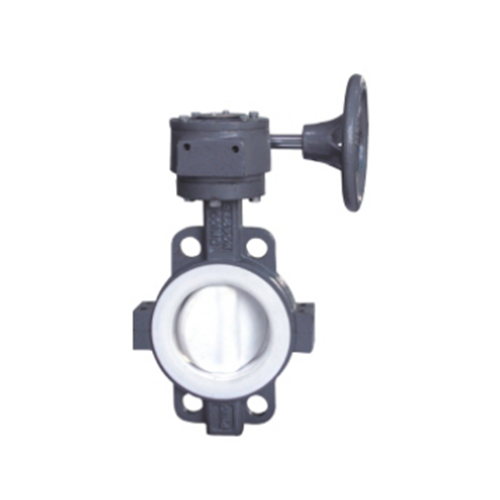
Gate Valve Packing and Sealing Structure Explained
Introduction
Gate valves are widely used in industrial applications to control the flow of fluids. One of the most critical aspects of gate valve performance is its sealing mechanism, which prevents leakage and ensures efficient operation. The packing and sealing structure of a gate valve plays a vital role in maintaining a tight seal around the stem while allowing smooth movement.
This article provides a detailed explanation of gate valve packing and sealing structures, covering materials, design considerations, and maintenance practices.
---
1. Overview of Gate Valve Sealing
Gate valves consist of a movable gate that slides between two seats to control fluid flow. The sealing system must ensure:
- Stem sealing – Preventing leakage around the valve stem.
- Body sealing – Ensuring no leakage between the valve body and bonnet.
- Seat sealing – Maintaining a tight seal when the valve is closed.
The packing system is primarily responsible for stem sealing, while gaskets and O-rings handle body sealing. Seat sealing depends on the gate and seat design.
---
2. Gate Valve Packing System
The packing system prevents fluid from leaking along the valve stem while allowing smooth stem movement. It consists of:
2.1 Packing Materials
Common packing materials include:
- Graphite – High-temperature resistance, excellent chemical compatibility.
- PTFE (Teflon) – Low friction, good chemical resistance, but limited to moderate temperatures.
- Aramid Fiber (e.g., Kevlar) – High strength, abrasion resistance.
- Compressed Fiber (e.g., Garlock, Flexitallic) – Good for general-purpose applications.
- Metal-reinforced Packing – Used in high-pressure and high-temperature applications.
2.2 Packing Arrangement
The packing is housed in the stuffing box, a chamber around the stem. The arrangement includes:
- Packing Rings – Multiple rings stacked to form a seal.
- Lantern Ring (Optional) – Used for lubrication or leak detection.
- Packing Gland – Compresses the packing to maintain sealing pressure.
2.3 Types of Packing Seals
- Compression Packing – Traditional method using soft packing compressed by a gland.
- Live-Loaded Packing – Uses springs to maintain constant pressure on the packing.
- O-Ring Seals – Used in some modern designs for better sealing with less friction.
---
3. Stem Sealing Mechanisms
3.1 Stuffing Box Design
The stuffing box is the most common stem sealing method. It consists of:
- Packing Rings – Multiple layers compressed to form a seal.
- Gland Follower – Adjusts compression on the packing.
- Gland Bolts – Tighten to apply sealing pressure.
3.2 Bellows Seal
Used in hazardous or high-purity applications, a bellows seal prevents stem leakage by using a flexible metal bellows welded to the stem and bonnet.
3.3 Lip Seals
Some gate valves use lip seals (elastomeric seals) for low-pressure applications where minimal friction is desired.
---
4. Body and Bonnet Sealing
The valve body and bonnet must be sealed to prevent external leakage. Common sealing methods include:
4.1 Gasket Seals
- Spiral Wound Gaskets – Metal and filler material for high-pressure applications.
- Flat Gaskets – Rubber, PTFE, or compressed fiber for general use.
- Ring-Type Joint (RTJ) Gaskets – Used in high-pressure oil and gas applications.
4.2 O-Ring Seals
Elastomeric O-rings provide reliable sealing in low-to-medium pressure applications.
4.3 Pressure Seal Bonnet
In high-pressure valves, a pressure seal bonnet uses system pressure to enhance sealing.
---
5. Seat Sealing Mechanism
The gate valve seat must provide a tight shut-off when closed. Common seat sealing designs include:
5.1 Resilient Seated Gate Valves
- Uses an elastomer (e.g., EPDM, NBR) bonded to the gate or seat for tight sealing.
- Suitable for water and low-pressure applications.
5.2 Metal-Seated Gate Valves
- Hard-faced seats (e.g., Stellite, tungsten carbide) for high-temperature and abrasive services.
- Requires higher closing torque but offers better durability.
5.3 Wedge Gate Design
- Flexible Wedge – Allows slight deformation for better sealing.
- Solid Wedge – Rigid design for high-pressure applications.
- Split Wedge – Self-aligning for improved sealing.
---
6. Factors Affecting Packing and Sealing Performance
Several factors influence sealing effectiveness:
6.1 Temperature and Pressure
- High temperatures can degrade packing materials.
- Excessive pressure may cause extrusion or blowout.
6.2 Fluid Compatibility
- Chemical attack can deteriorate packing and seals.
- Abrasive fluids increase wear.
6.3 Stem Surface Finish
- A smooth stem reduces packing wear.
- Rough surfaces accelerate leakage.
6.4 Proper Gland Adjustment
- Over-tightening increases friction and wear.
- Under-tightening leads to leakage.
---
7. Maintenance and Troubleshooting
7.1 Packing Replacement
- Loosen gland bolts and remove old packing.
- Install new rings in a staggered pattern.
- Tighten gradually to avoid excessive friction.
7.2 Common Issues and Solutions
- Leakage at Stem – Tighten gland or replace packing.
- High Operating Torque – Lubricate or adjust packing compression.
- Seat Leakage – Inspect gate and seat for damage.
7.3 Preventive Measures
- Regular lubrication of stem and packing.
- Periodic inspection for wear and corrosion.
- Use of live-loaded packing for consistent sealing.
---
8. Conclusion
The packing and sealing structure of a gate valve is crucial for preventing leaks and ensuring reliable operation. Proper material selection, design considerations, and maintenance practices are essential for optimal performance. Understanding these components helps in selecting the right valve for specific applications and maintaining it effectively.
By following best practices in packing installation, gland adjustment, and seal maintenance, gate valves can achieve long service life with minimal leakage risks. Whether in water systems, oil and gas, or chemical processing, a well-designed sealing system ensures efficiency and safety.
---
This article provides a comprehensive overview of gate valve packing and sealing mechanisms. If you have further questions or need additional details, feel free to explore technical manuals or consult valve engineering experts.
This website uses cookies to ensure you get the best experience on our website.
Comment
(0)